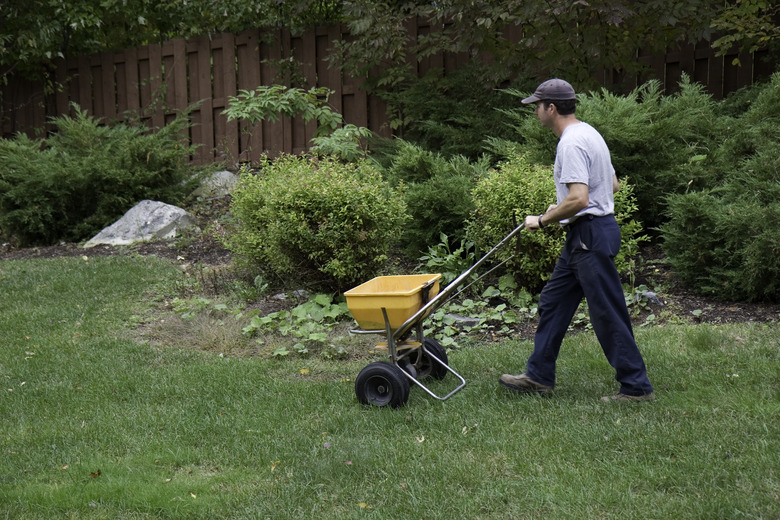How To Fertilize My Lawn During Hot Weather
We may receive a commission on purchases made from links.
Warm-season grasses can use a boost from fertilizer in summer, when they are green and actively growing. But fertilizing in summer heat requires careful application to avoid burning a lawn. In fact, a lawn that is under stress from hot temperatures and lack of water will go dormant, unable to take up nutrients that simply wash away and pollute the environment. Consider the type of grass, weather conditions, and most appropriate fertilizer when deciding when and how to fertilize your lawn.
Grass Types to Fertilize in Summer
Grass Types to Fertilize in Summer
Cool-season grasses might look like they could use a helping hand in summer, but this is the worst time of year to fertilize them. Fescues, Kentucky bluegrass, and ryegrass are common cool-season grasses. Depending on the climate, they tend to burst with green growth in spring, followed by browning and dormancy in a hot, dry summer. Once temperatures soar into the 80s, it is too hot to fertilize lawns planted with cool-season grasses. Cool-season grasses can be fertilized at the end of summer, however, to promote green growth in the fall.
Warm-season grasses, on the other hand, are most active in summer heat and go dormant in winter. Common types include Bermuda, St. Augustine, Zoysia, and centipede grass. These are typically fertilized when air temperatures first begin to climb into the 80s and toward the end of summer, but check with your local extension office for the best months to fertilize in your climate.
Things Needed
-
Garden hose
How to Fertilize Grass in Hot Weather
1. Choose Your Fertilizer
Established lawns typically need a fertilizer that is heavier in nitrogen than other nutrients. Fertilizers list the ratio of nitrogen, phosphate, and potash (N-P-K) in their formulation in that order. A ratio of about 4-1-2 is often recommended, but it's best to have your soil tested through the local extension office for a recommendation specific to your lawn. Though you can find water-soluble fertilizers, most formulations include slow-release fertilizer to avoid burning the lawn and to reduce the potential of pollution from runoff.
2. Apply the Fertilizer
Fill a broadcast spreader with the fertilizer. Turn the dial to the appropriate setting as recommended on the fertilizer's product label. Push your spreader across the lawn, turning at the end of the row and slightly overlapping each strip with fertilizer.
3. Water the Lawn
Water the fertilizer in thoroughly immediately after application. Soak the soil well, but do not allow water to pool or run off the lawn. The fertilizer will soak down to the root zone, allowing the grass to begin absorbing the chemicals.
